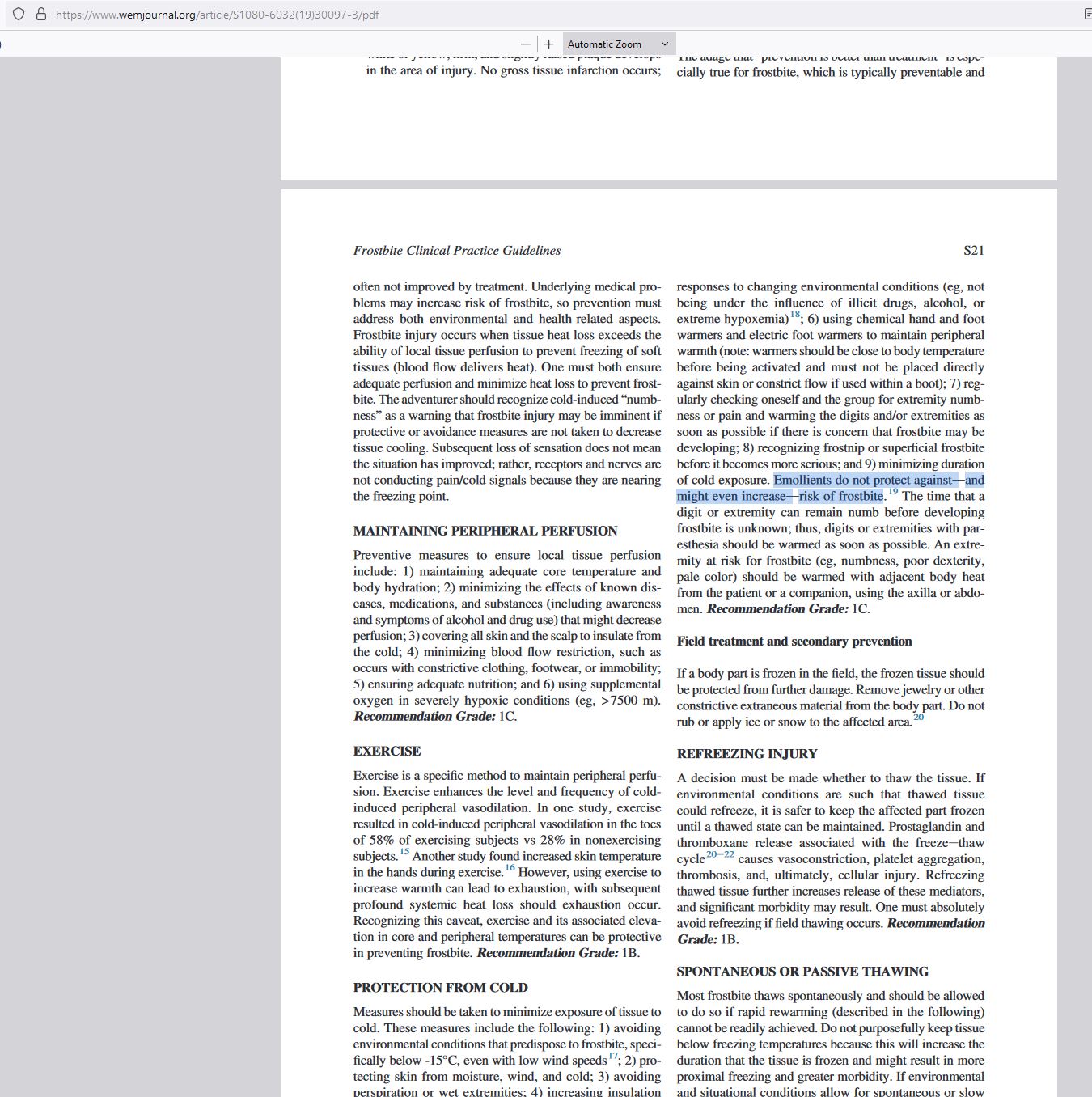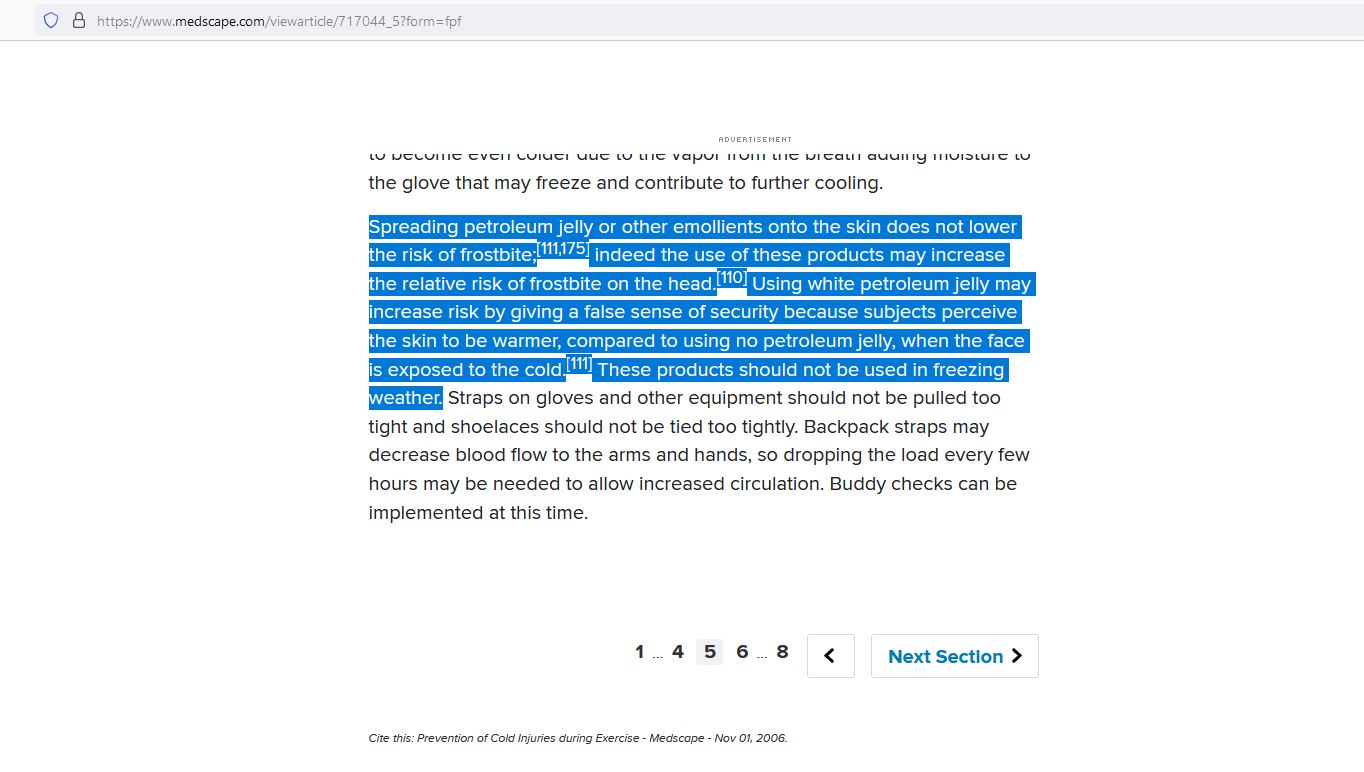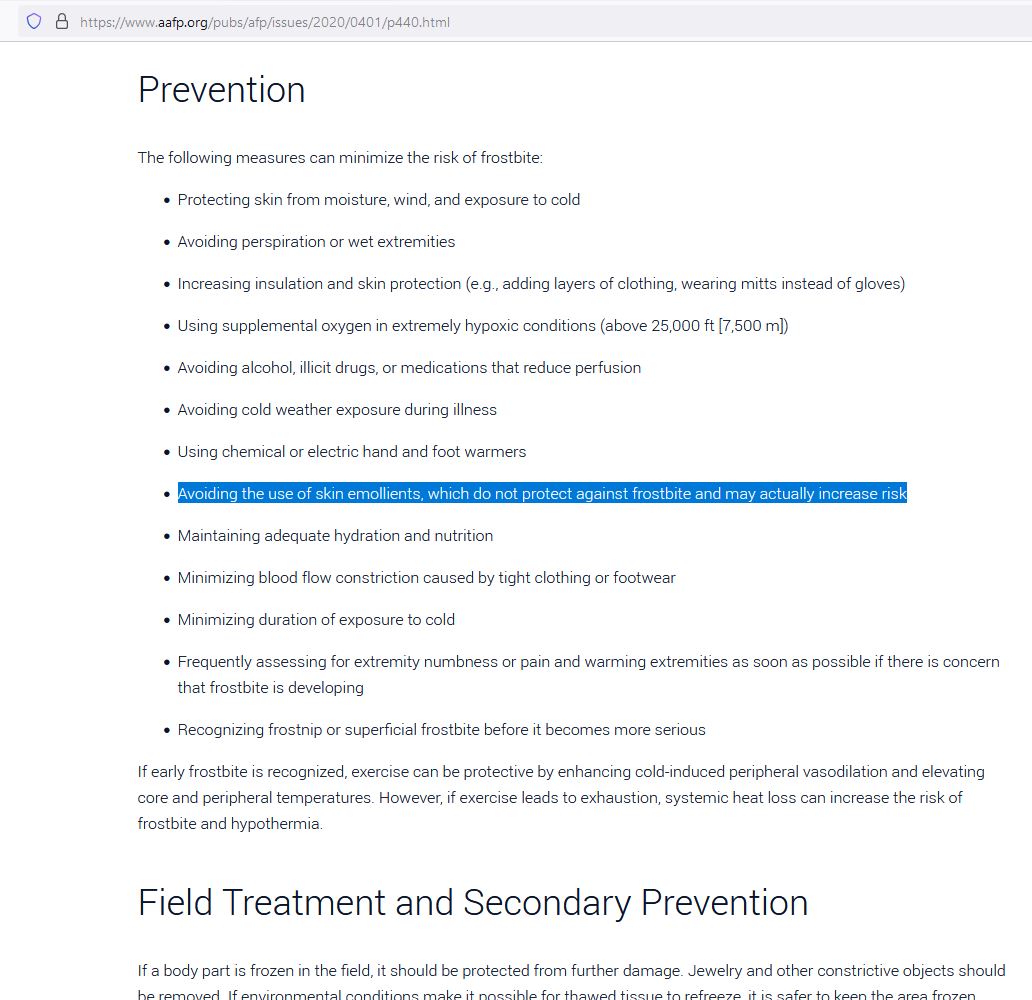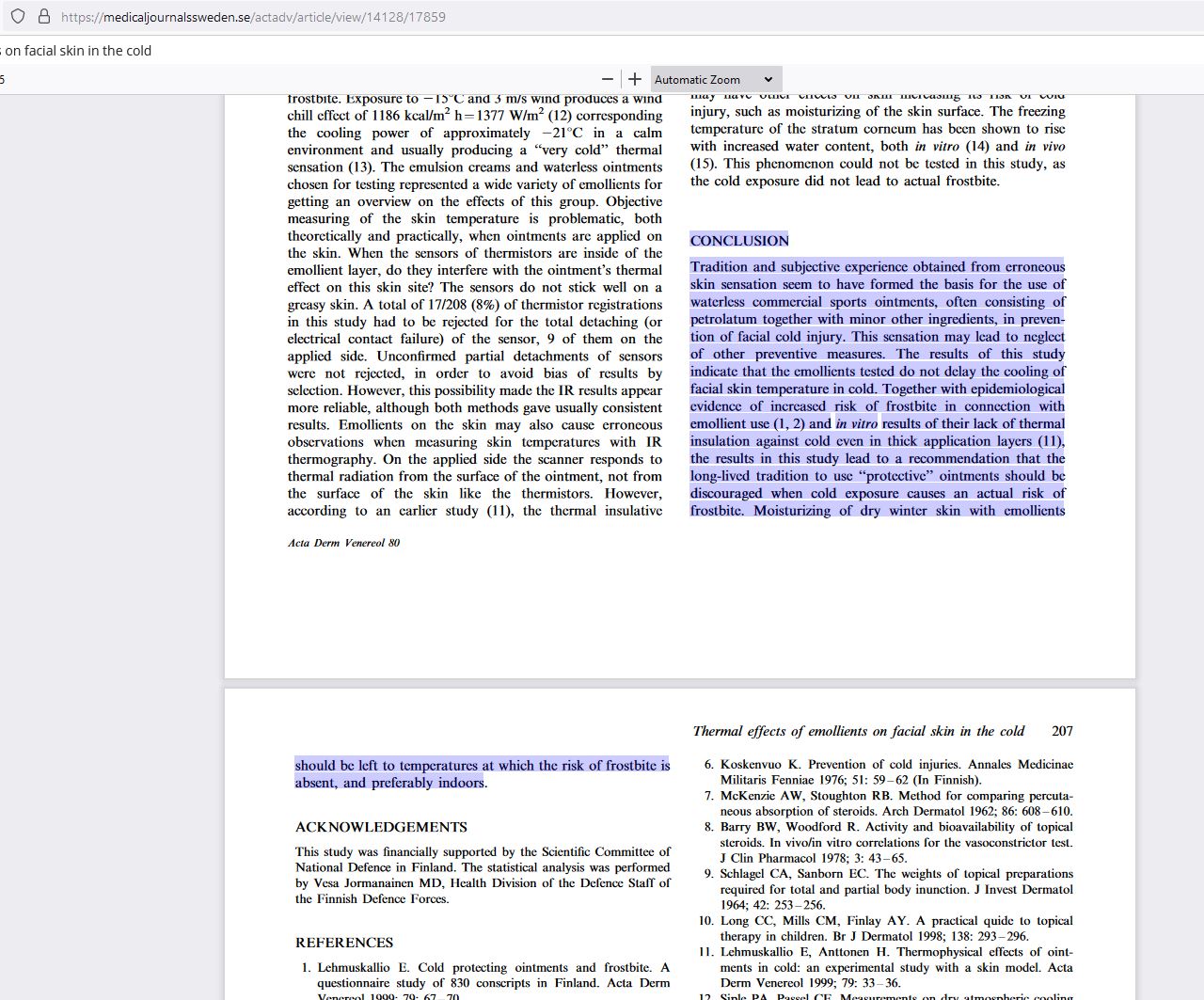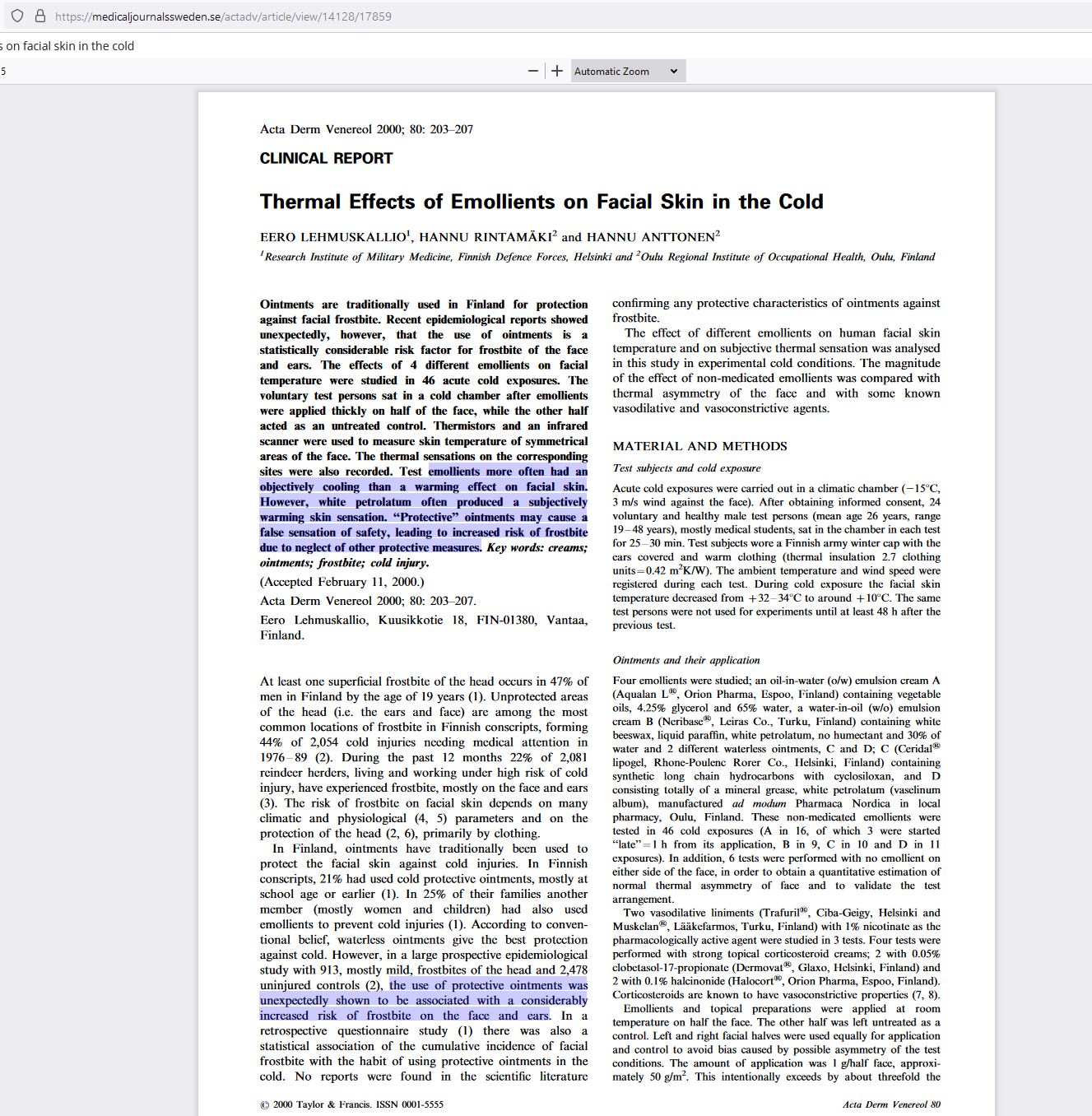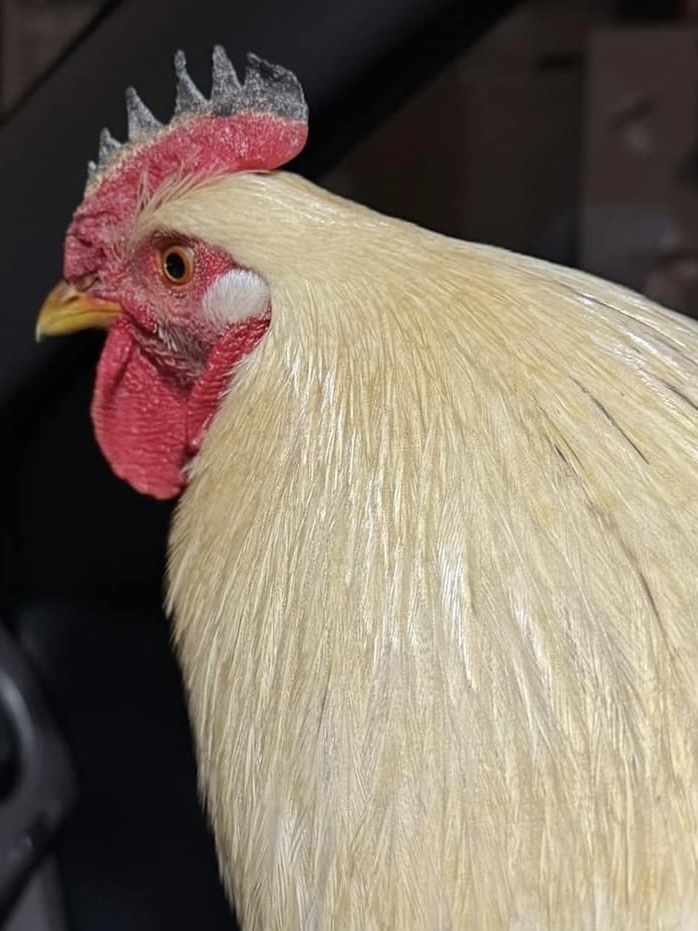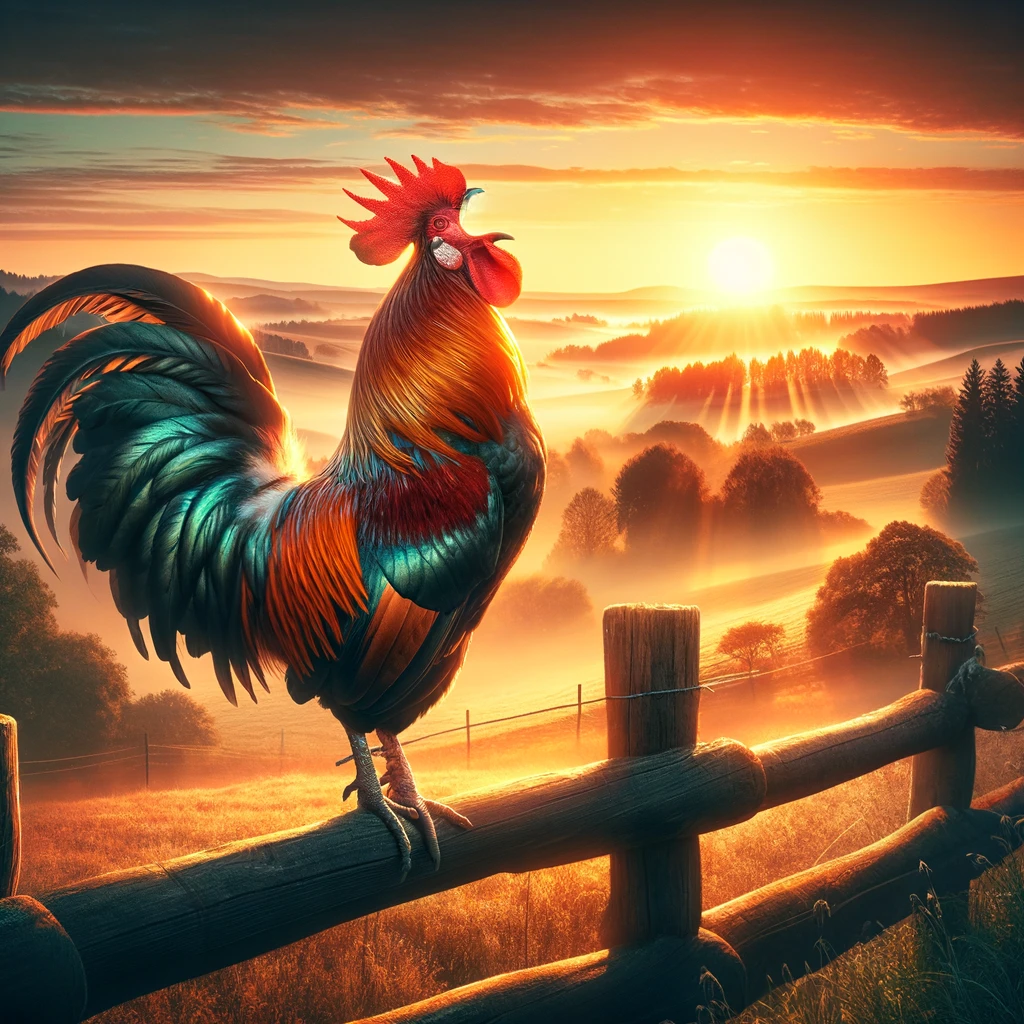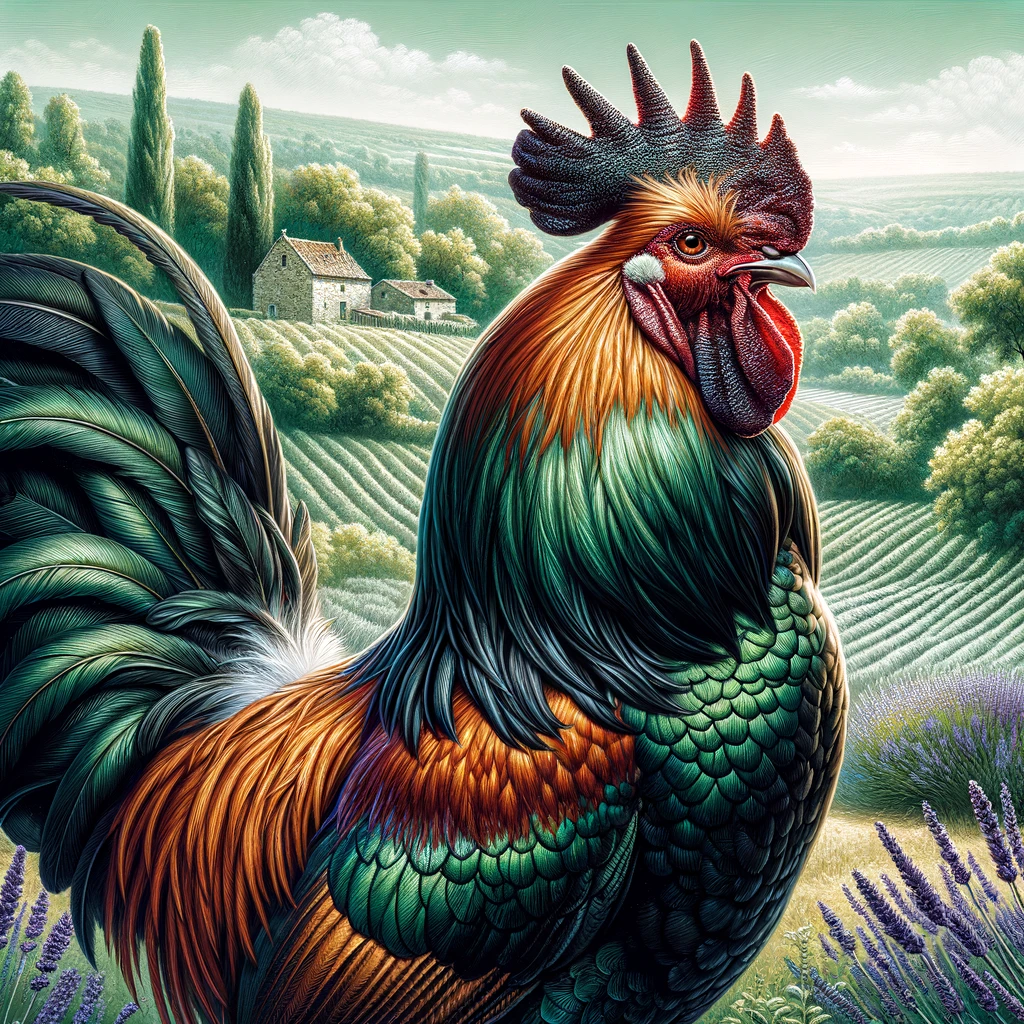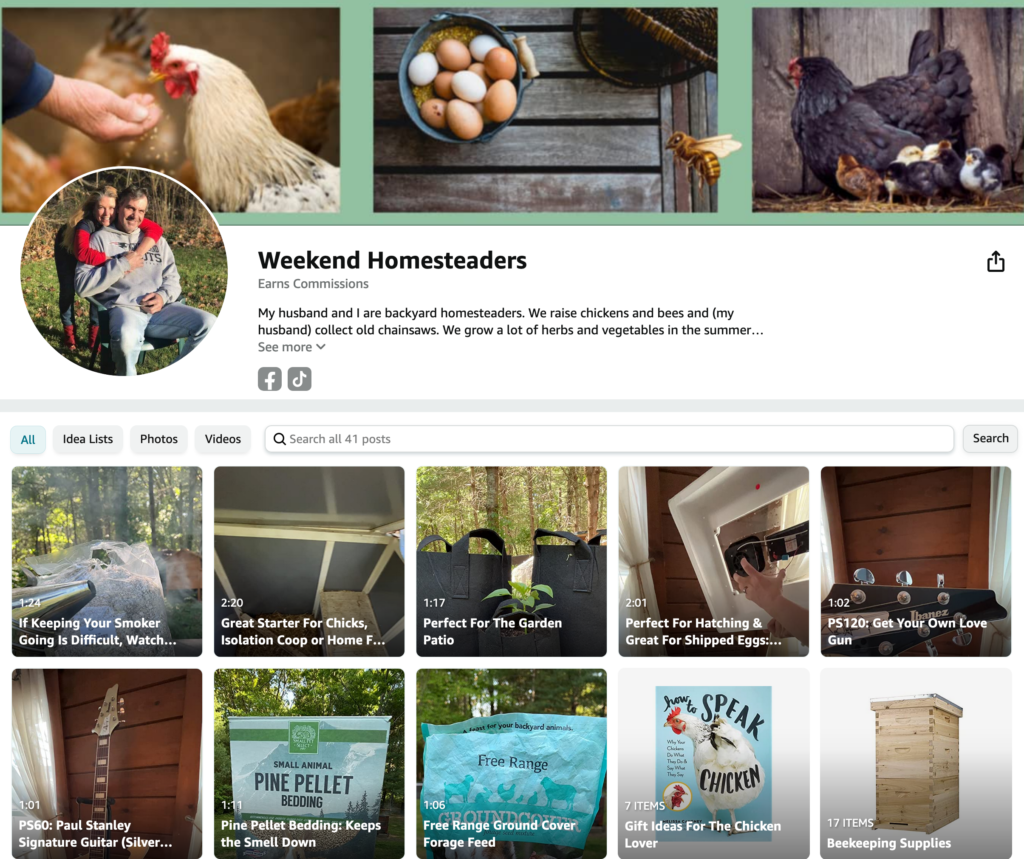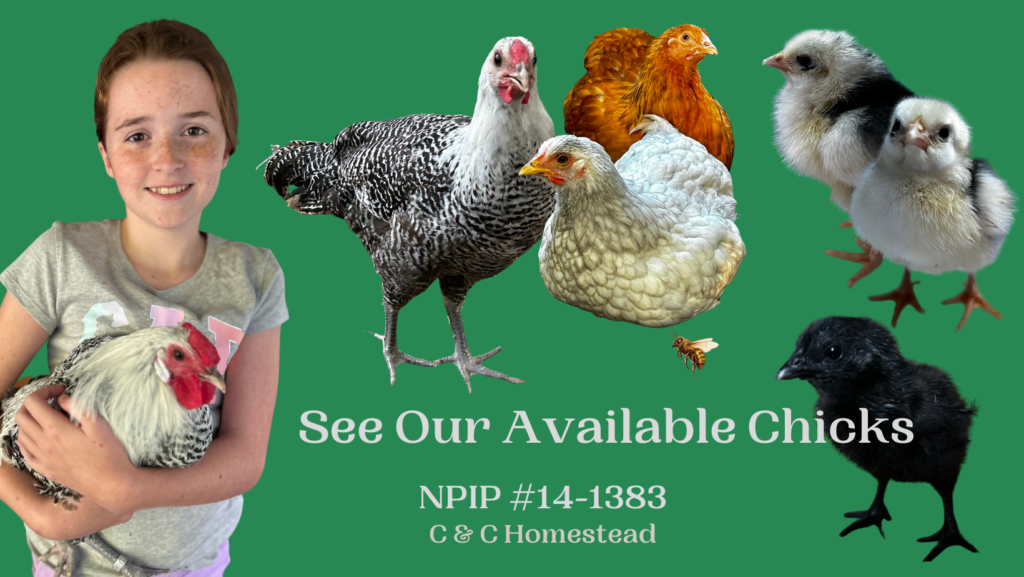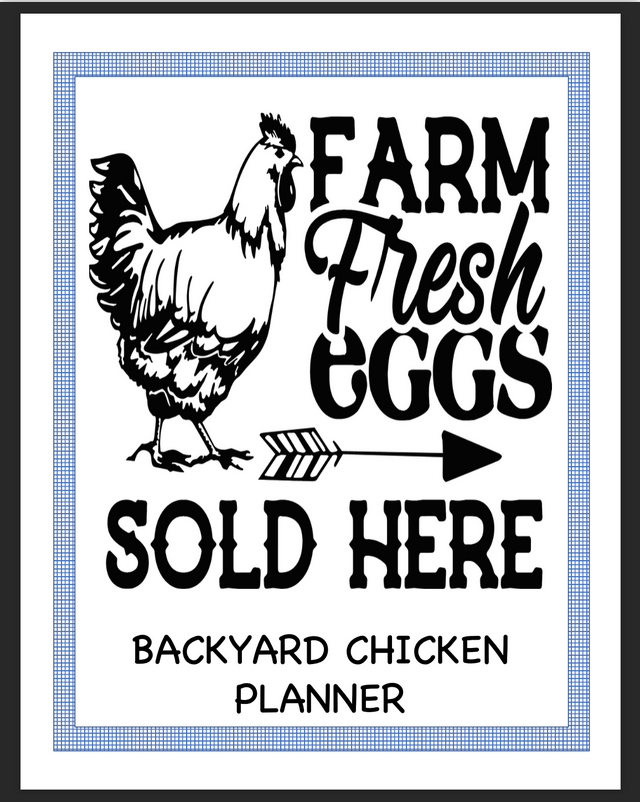Balancing Corporate & Homesteading Lifestyles
Patience & Commitment
There is so much we can learn from the simple things in life around us. My rooster ![]() Melody is a perfect example. I committed a lot of time and patience to raising him. It didn't happen overnight ... but he trusts me.
Melody is a perfect example. I committed a lot of time and patience to raising him. It didn't happen overnight ... but he trusts me.
 The Essence of Commitment
The Essence of Commitment 
 The Interplay Between Patience and Commitment
The Interplay Between Patience and Commitment 
 Real-World Applications
Real-World Applications 
Roosters: Are They For You?
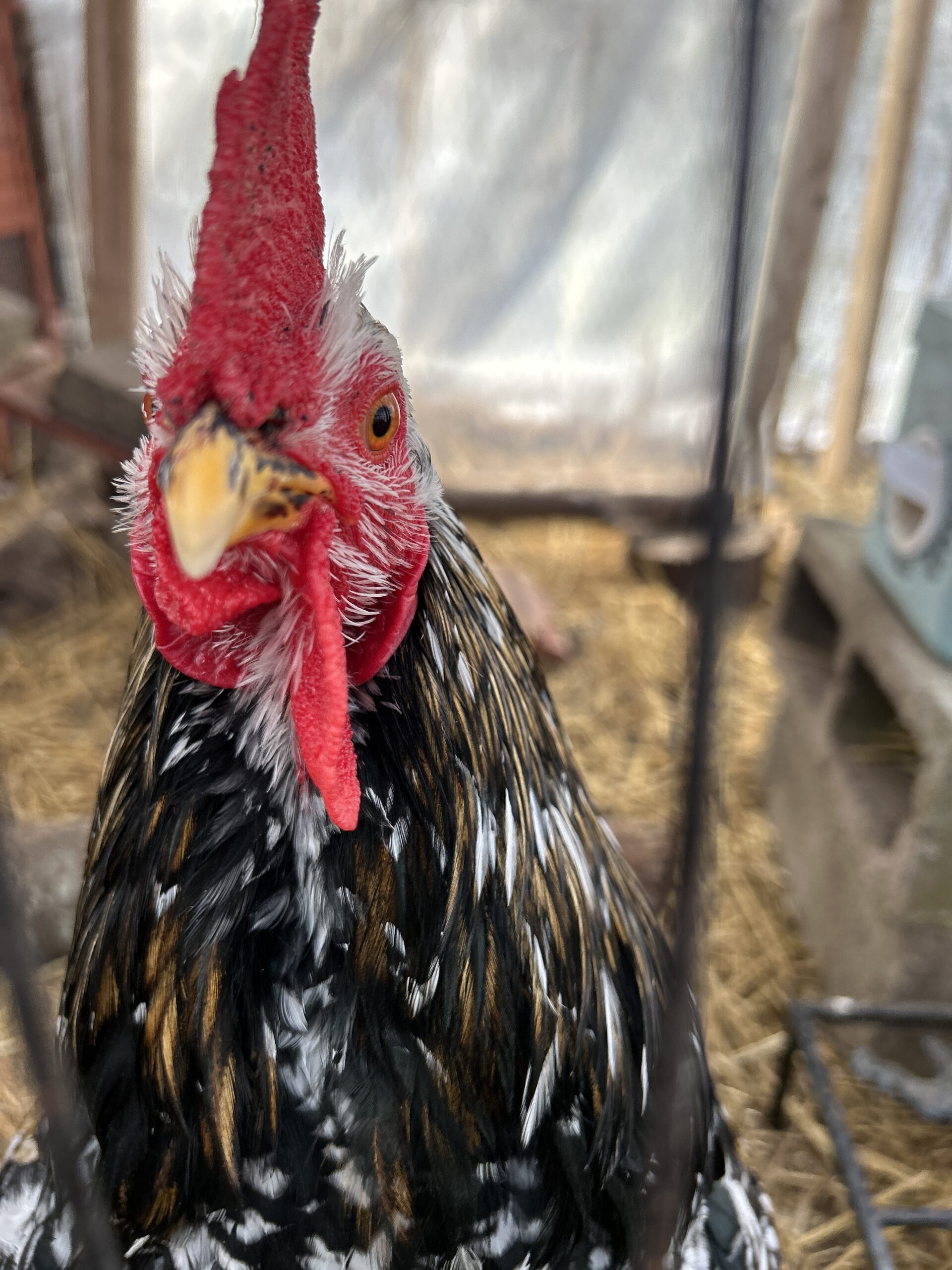
I am in a lot of chicken Facebook groups and have seen too many people posting about injuries from their roosters.
It is very sad and frustrating because most of these injuries could have been prevented if the "keeper" had been informed and prepared for the challenges of keeping a rooster.
Sweet and cuddly roosters do exist, some may come by it naturally, but most have learned to trust and peacefully co-exist with their people.
Roo-berty (rooster puberty) and mating season are generally the most challenging times.
My first experience with keeping a rooster did not go well. I stopped handling him around 6 weeks when he was feathered and able to go outside. My run was set up so I could never catch him. He tried to flog anyone who got near the run. We lived with it. I did not want a rooster, but I wanted Orpingtons (straight run) so I got 2 thinking 50-50 chance for a rooster. And yes, I got a rooster and a hen. Sadly he was killed by a raccoon protecting his flock.
Remembering chickens are prey animals, the rooster, as protector, has a very strong protective instinct. That is his job!
Some breeds have more aggressive and dominant instincts than others and each rooster has a unique personality and temperament.
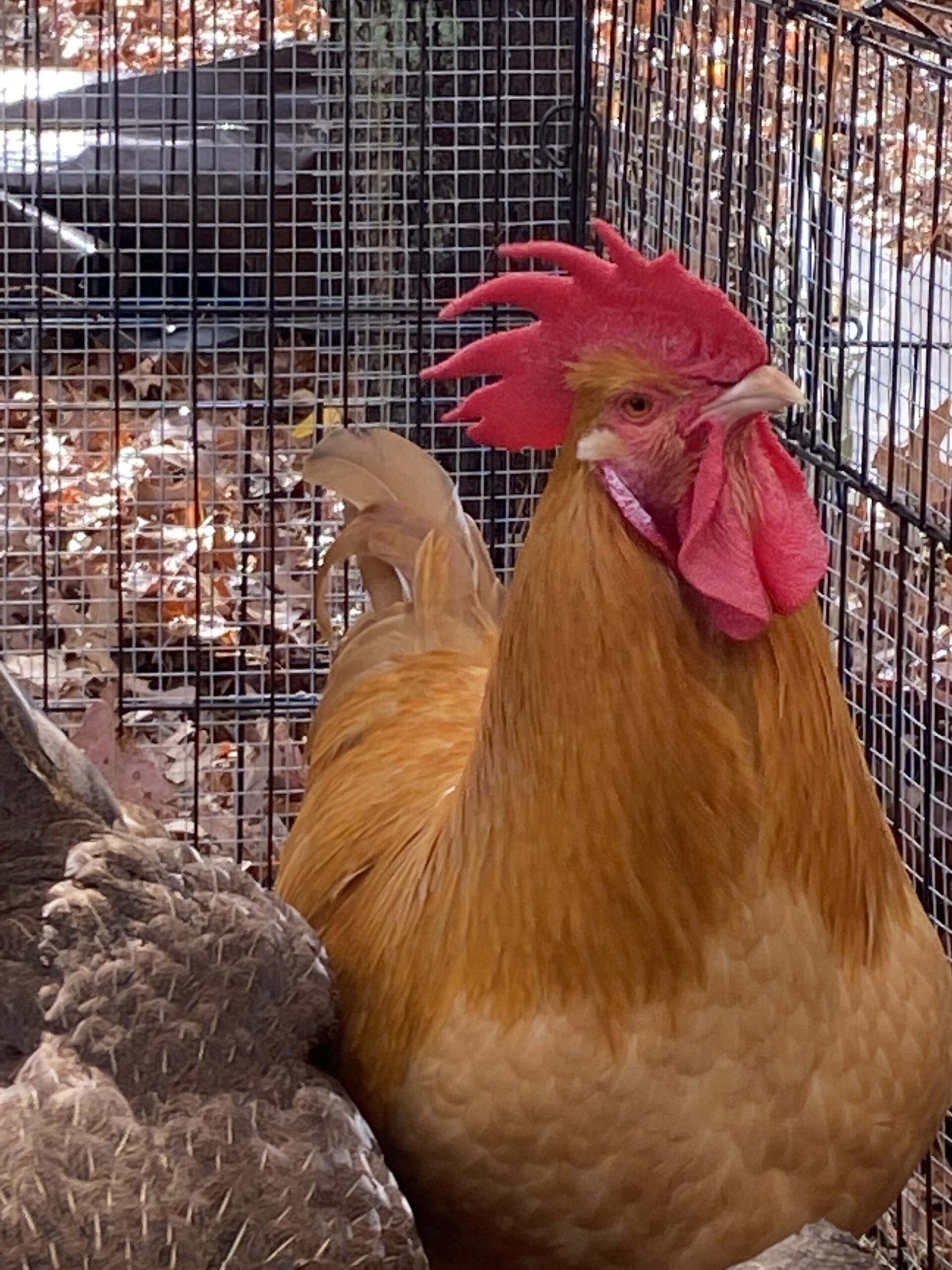
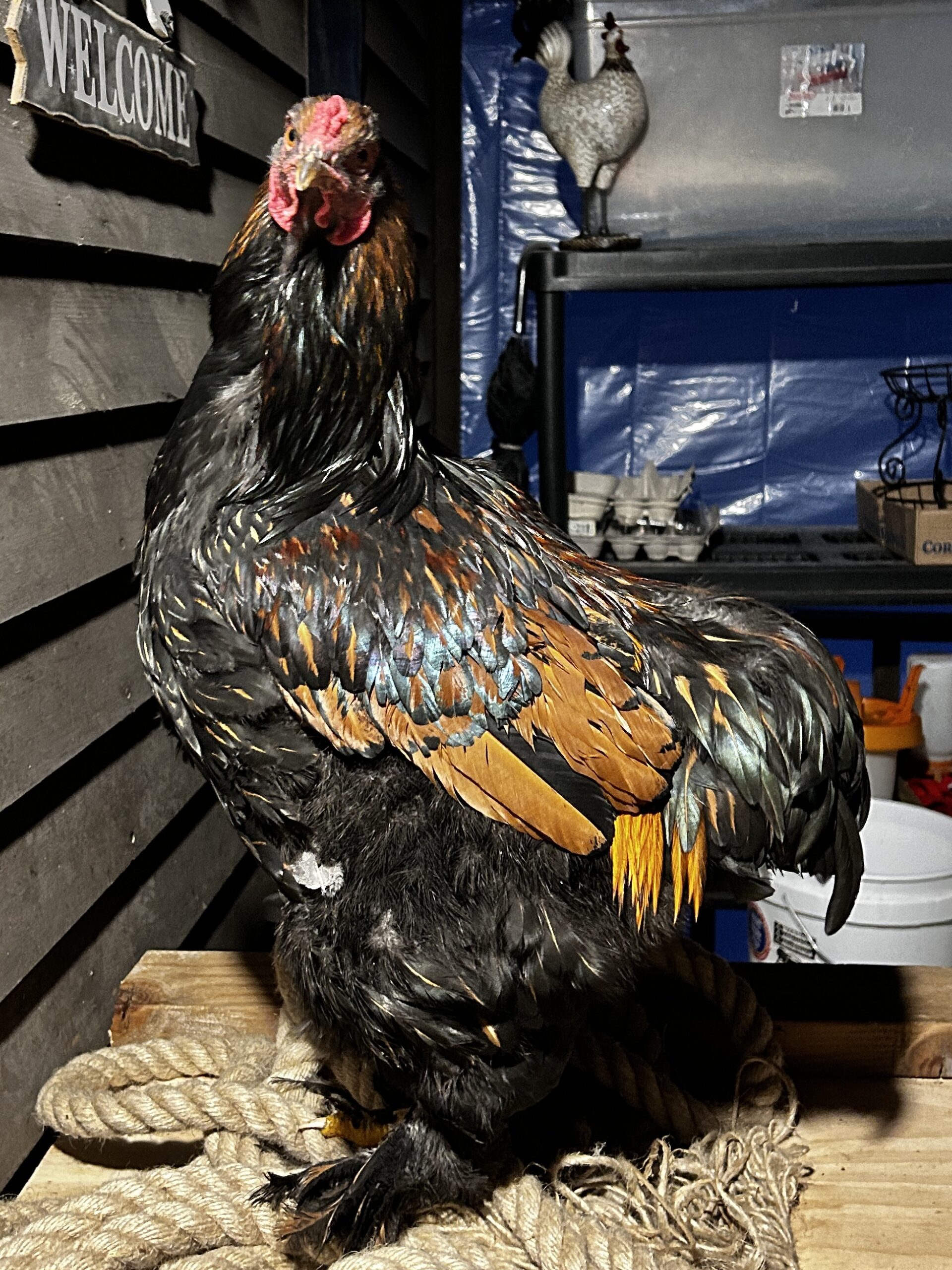
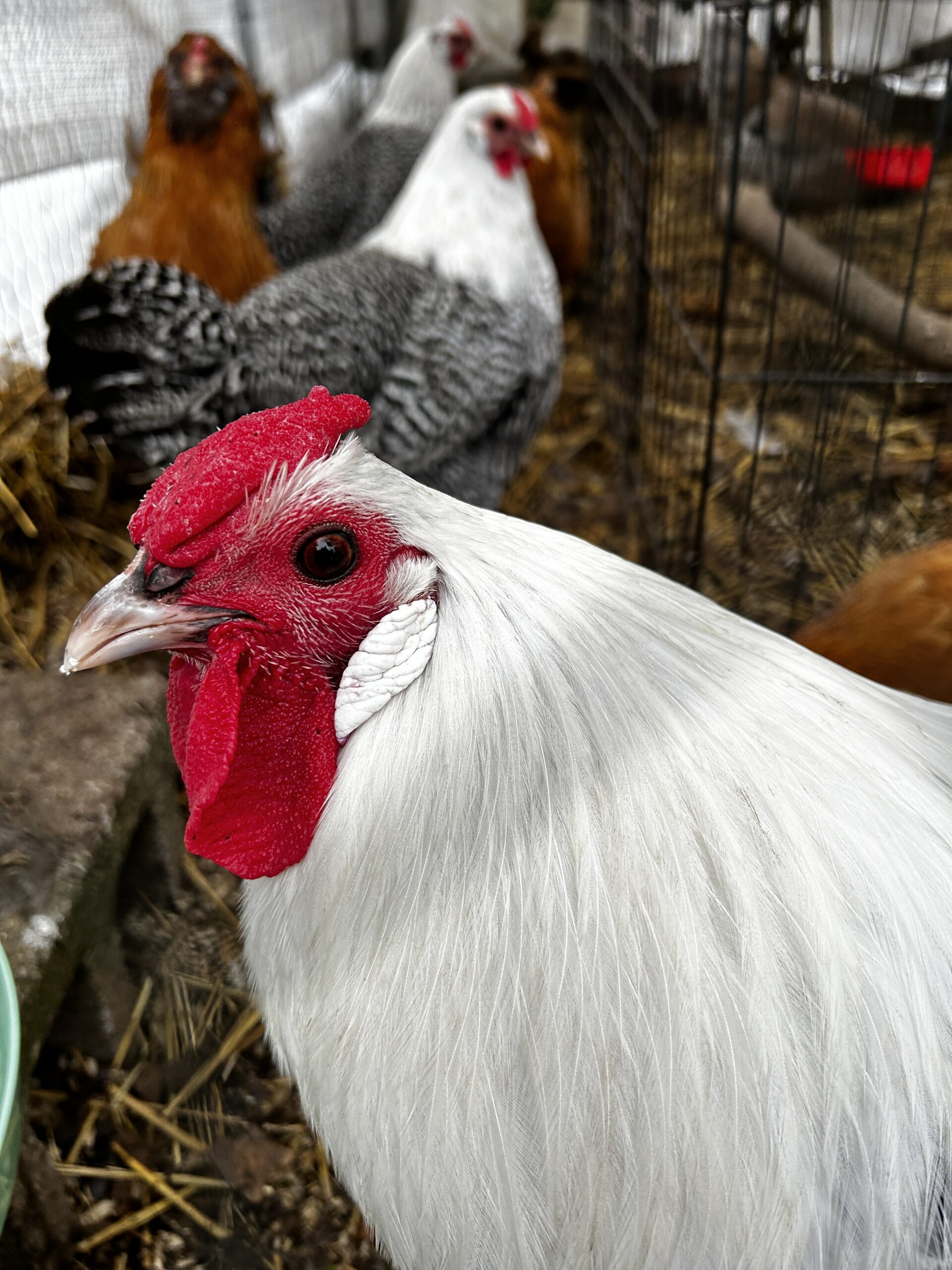
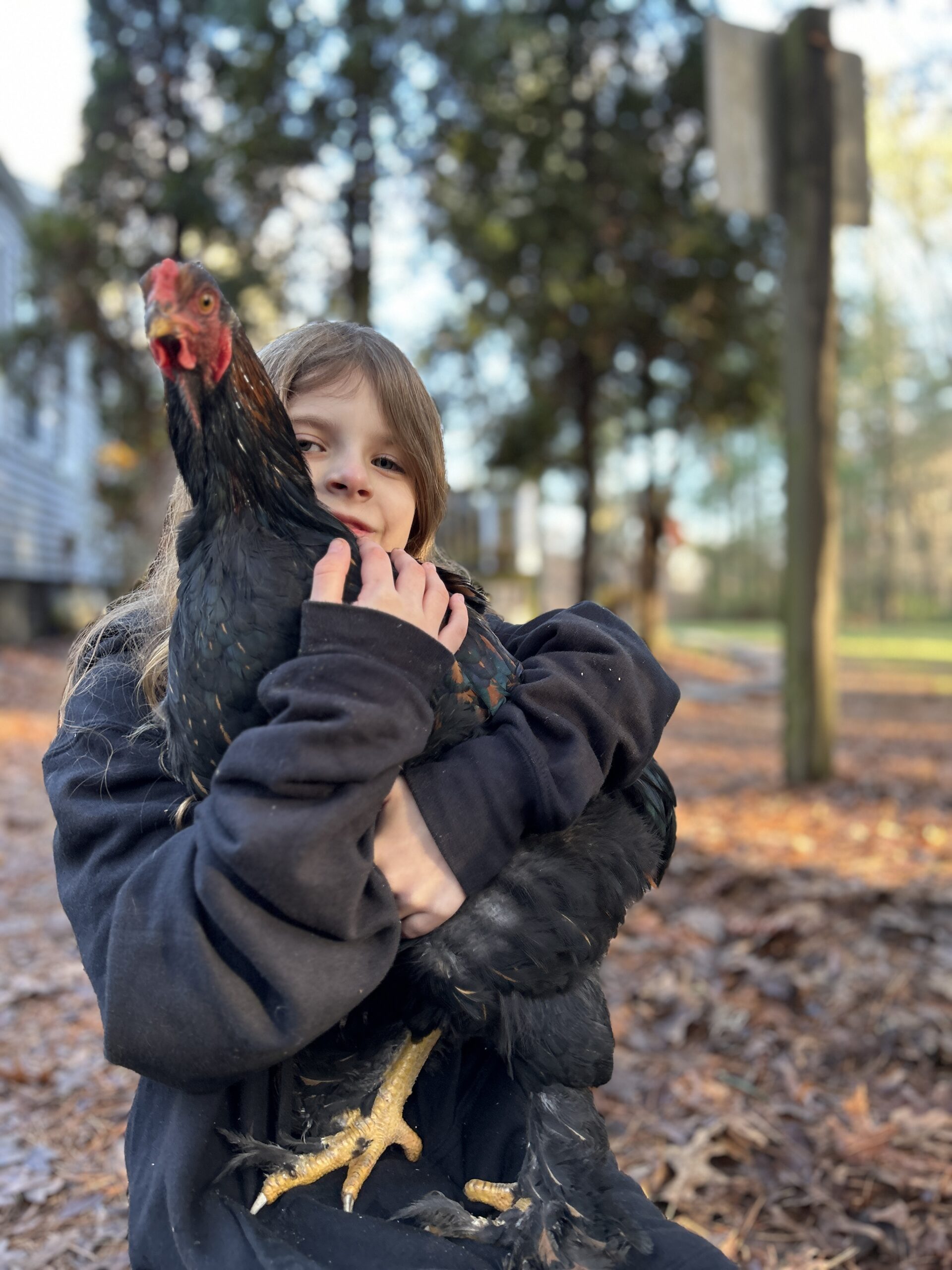
Roosters are amazing, they are fun and loving animals but they aren't for everyone. They require a commitment. We can always hope for the sweet rooster that loves people but be prepared for the ones that don't. So many people treat them as disposable and either cook, mistreat, dump, or rehome them at the first signs of normal rooster behavior. Roosters are worthy of respect and humane treatment.
Tips & Things To Think About Before Getting A Rooster
In no particular order, here are some things to think about, tips, and lessons I have learned.
1) Don't get or try to keep a rooster if you haven't done your research and know what to possibly expect.
2) Roosters hit puberty typically between 4-6 months - some sooner or later depending on the breed. Some young cockerels will show dominant behavior at a young age. This is a really good time to observe their behavior.
3) The signs of puberty are subtle but there. For some, it seems like the flick of a switch, one day your roo is sweet and doesn't mind you hanging around the hens and the next day he is flogging you.
4) Don't turn your back on a rooster. If he sees you as a predator, as an opportunist (which roosters are), he will take advantage of your distraction. Especially don't bend over or let your rooster get face level. Spurs or a bite in the face could cause a lot of damage.
5) Dress appropriately around your rooster. Don't wear flip flops, shorts or even real thin clothing until you know what to expect. Spurs and beaks can do damage. I personally wear bib overalls when in with my roosters. I can still feel the flog (if it happens) but they can't break the skin. I also wear gloves when picking up my biters.
6) Some people suggest you present yourself as a bigger, aggressive rooster, so your rooster sees you as the dominant one in the flock. Remember if your rooster views you as dominant and he wants to be dominant, he will challenge you when he thinks he has the opportunity to win (when you aren't looking). It's best to earn trust as a caretaker than gain dominance as a member of the flock.
7) Kicking, carrying upside down, or pressing your rooster into the dirt is only going to create fear, not trust. It's abuse (would you do that to a dog or cat). Your rooster may run from you or avoid you ... but given the opportunity and advantage, he will likely try to attack at some point. If you ever have plans to hold him or treat him for injuries, good luck.
8) Roosters have bad days, just like people. If a predator is in the area or bad weather, he may be more on edge and extra vigilant. Let him have his space and interact at a minimum until he calms down.
9) Roosters, again unique, may not like certain colors. I had red Ugg rubber boots that I loved, Storm, my rooster didn't care for them. I no longer wear them around him.
10) Consistency. Roosters do well with consistency and routine. As silly as it sounds, when I close up the coop at night or open it in the morning I sing Zippity -Do Dah (LOL, it was the first song I could think of and now I'm stuck with it.) Before I started doing this, Storm would come barreling out of the coop when I approached. Now, he hears me singing and so far so good.
11) Use a barrier of some sort to protect yourself when going in the run. I use a net. At first Storm was afraid of it but now isn't. I have used it on occasion when I need to catch him but I always carry it and use it as a barrier. I have never hit him with it or done anything to make him fear it. I also use it when closing the coop door. The handle allows me to cover the coop door when I'm far enough away that if he should charge out, the net serves as a barrier. Having my face at coop door level is inviting disaster if I can't close the door fast enough.
12) Roosters crow. Your neighbors may complain. Know your local laws and ordinances. We have no restrictions but my neighbors weren't happy with early morning crowing. The boys don't go outside until 8am. It was a compromise I had to make to keep peace with the neighbors.
13) Win them over with good treats!
14) Some roosters are nicer than others. Just because your rooster goes after you doesn't mean he's aggressive. (In reverse, there are some roosters that are aggressive - just like dogs) and not meant for a family backyard flock.) He is acting on instinct. Much of the final outcome will be dependent on you and how you react to his behavior. Do you make him feel threatened?
15) If you have young kids, think it through. It may not be the time for a rooster or look for a family friendly older rooster. You might have to wait a while, but they are out there.
16) Just because you hatched him or raised him from a day old doesn't mean he won't question whether you are a threat when puberty hits him. Instincts are powerful.
17) Don't look at roosters through your eyes, but learn to see your rooster through his eyes.
Conclusion:
Roosters are a great addition to any flock as long as you are prepared and know what to expect. They aren't hens and don't typically act like hens. They may change the flock dynamics. Just do your research and you will be prepared to face the challenges they might throw at you.
Here are some previous posts about roosters:
Navigating Rooster Puberty & Hormones
What Could Go Wrong With Keeping A Rooster
DIY: Chicken Swing
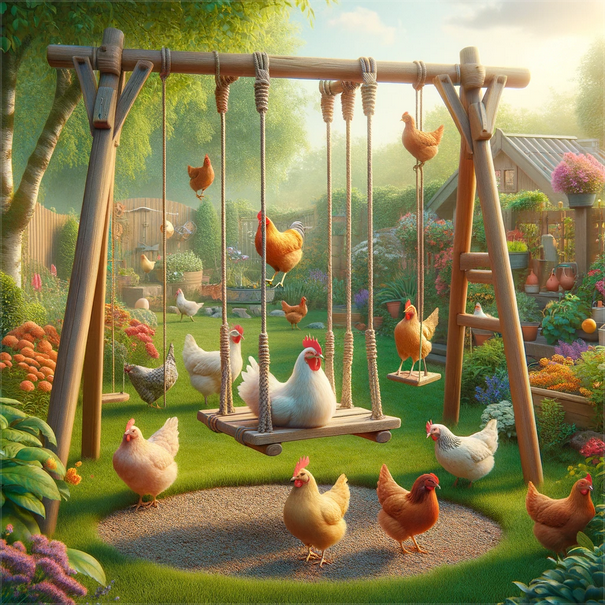
In the spirit of enhancing your coop and providing your feathered friends with a source of entertainment and exercise, this month's DIY project is a chicken swing! This simple yet effective addition to your chicken run not only enriches your chickens' environment but also stimulates their natural behaviors and curiosity.
Here's how to build a chicken swing step by step:
Roo-Tastic Revelations: What Could Go Wrong With Keeping A Rooster
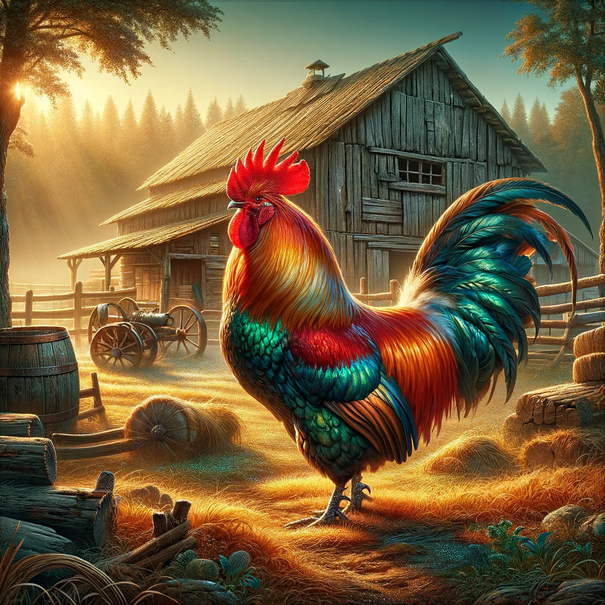
While roosters play a crucial role in flock management, protection, and breeding, their behavior and the logistics of keeping them can present challenges. Understanding these potential issues can help poultry keepers make informed decisions about whether and how to incorporate roosters into their flocks.
Before you add a rooster to your flock, it's always a good idea to do a little research so you know what to expect.
1. Aggression/Overly Protective
- Towards Humans: Roosters can become aggressive towards people, especially during the breeding season or if they feel their flock is threatened.
- Towards Other Animals: They might also show aggression towards pets or other farm animals.
- Within the Flock: Aggressive behavior towards hens can cause injuries or stress within the flock.
2. Noise
- Early Morning Crow: Roosters crow at dawn, which can be disruptive, especially in urban or suburban areas.
- Frequent Crowing: They don't just crow at sunrise but can do so throughout the day, which might be problematic for neighbors.
3. Breeding Concerns
- Overbreeding: Roosters may over-mate with hens, leading to stress, feather loss, or injuries among the hens.
- Unwanted Fertilization: For keepers not interested in hatching chicks, the presence of a rooster means eggs will be fertilized.
4. Legal and Zoning Issues
- Local Regulations: Many urban and suburban areas have ordinances against keeping roosters due to noise concerns.
- Zoning Restrictions: Certain zoning laws may restrict the keeping of roosters on properties not zoned for agricultural use.
5. Feed and Care
- Resource Allocation: Roosters require food, space, and care but do not produce eggs, leading some to view them as less economically viable.
- Health Management: Managing the health of roosters, especially if they are prone to fighting, can be challenging and require additional resources.
6. Territorial Behavior
- Space Issues: Roosters can be territorial, which may lead to conflicts if space is limited.
- Integration Challenges: Introducing new birds into a flock can be more difficult with a territorial rooster.
7. Flock Dynamics
- Imbalanced Ratios: Having too many roosters can lead to a disrupted pecking order, stress, and injuries among birds.
- Selective Breeding: For those interested in breeding, an unwanted rooster can complicate selective breeding plans.
8. Handling Difficulties
- Training Challenges: Roosters can be harder to handle and train, especially if they are very protective or skittish.
- Transportation and Housing: Moving roosters or finding them new homes can be difficult due to their protective tendencies and the noise they produce.
9. Emotional Attachment
- Attachment Issues: Owners may become attached to roosters that they cannot legally keep or that cause problems within the flock.
- Decision to Cull: Making the decision to cull aggressive or unwanted roosters can be emotionally challenging for some keepers.
Generally speaking, hens lay 50% cockerels (boys) and 50% pullets (girls). With the average flock ratio of 8-10 hens per rooster, that equals a lot of unwanted boys.
In addition to this, many people accidentally end up with a rooster. They handle them from time to time and all seems well ... then puberty hits, the boy gets feisty, protective, and starts flogging anything that comes in his territory ... he's labeled aggressive ... and the next day soup.
Preparation is half the battle. Roosters aren't for everyone but for those of us who keep them, they are an amazing addition to our flocks.
Roo-tastic Revelations: Navigating Rooster Puberty & Hormones

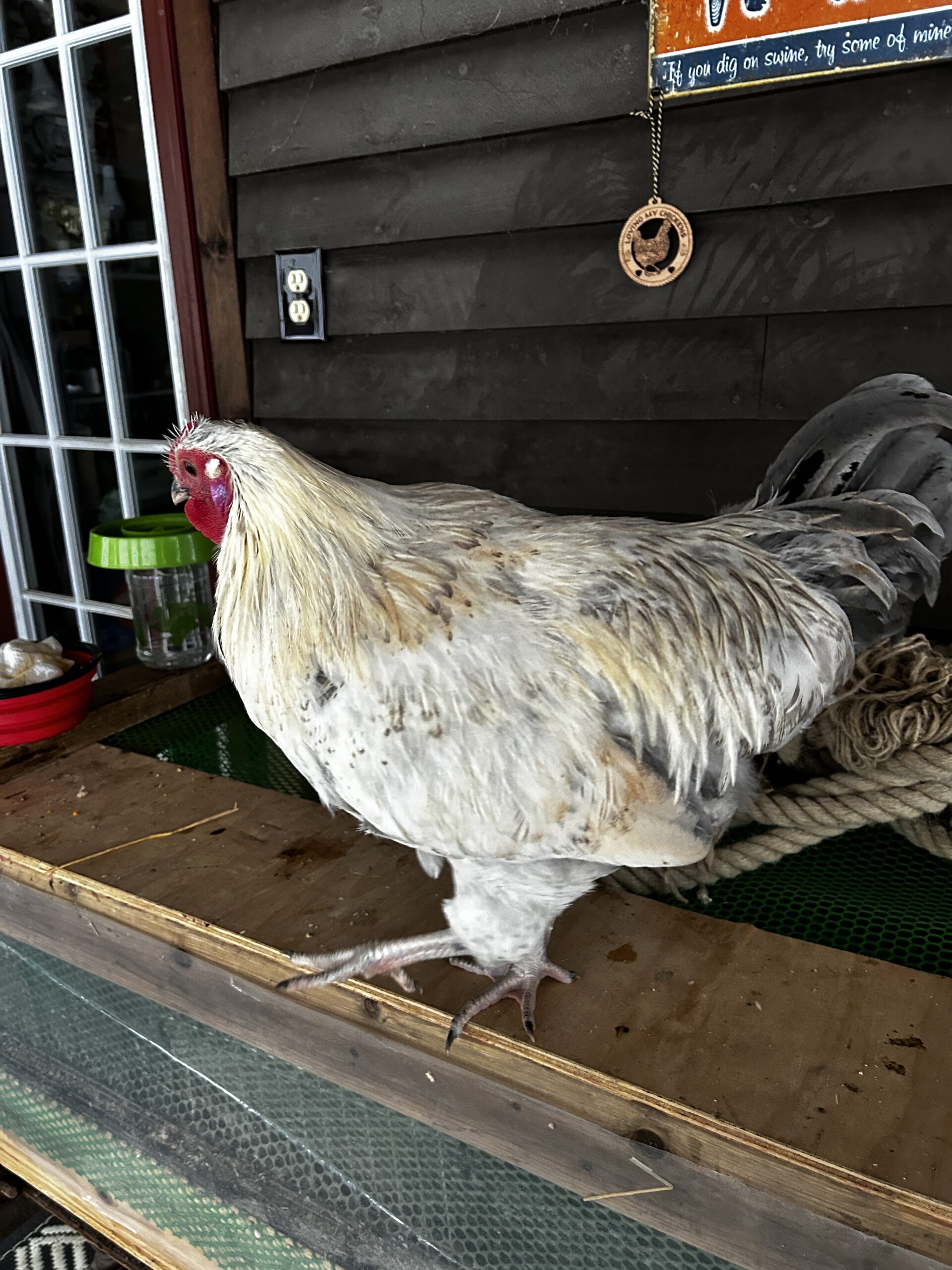
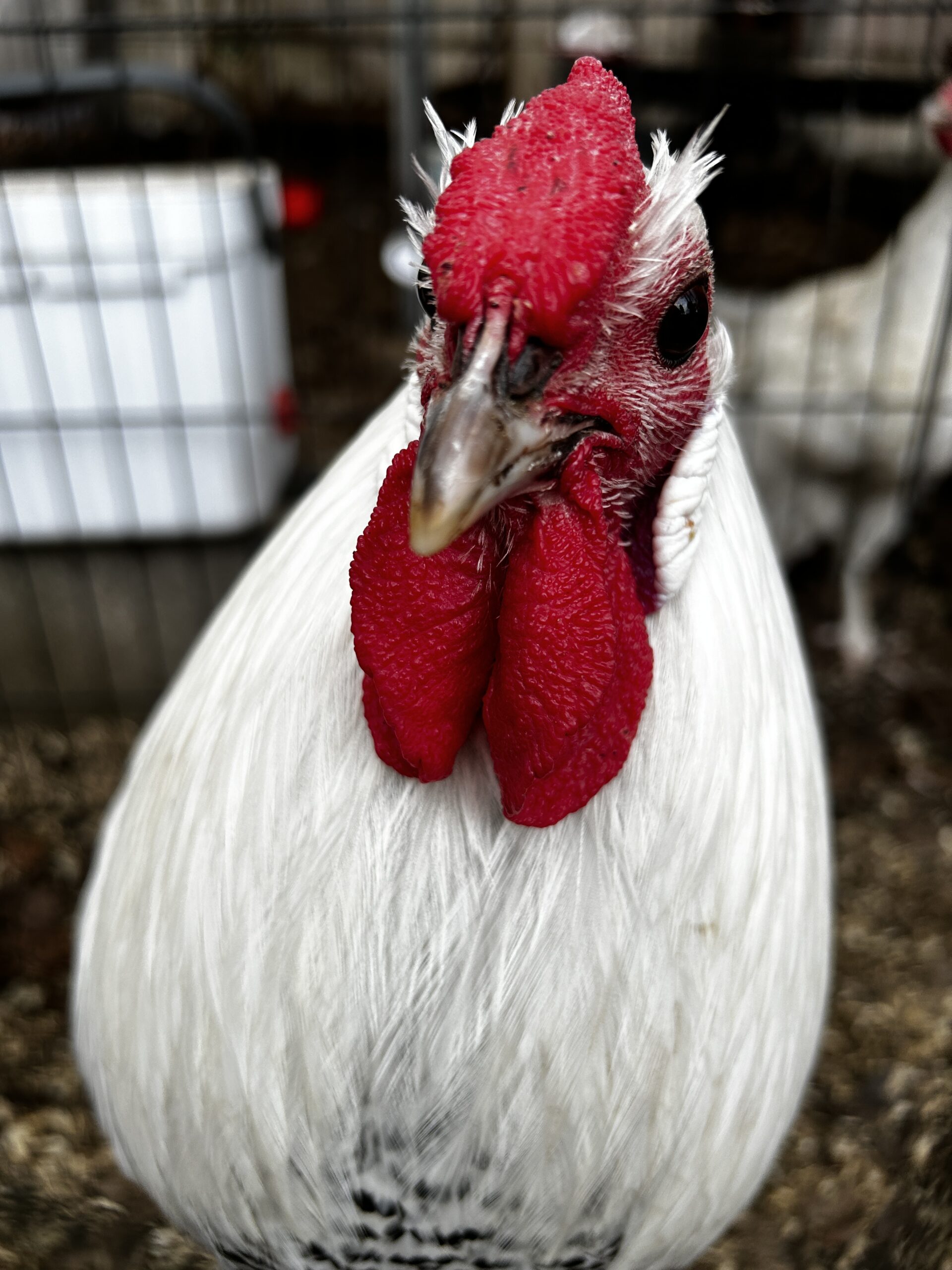
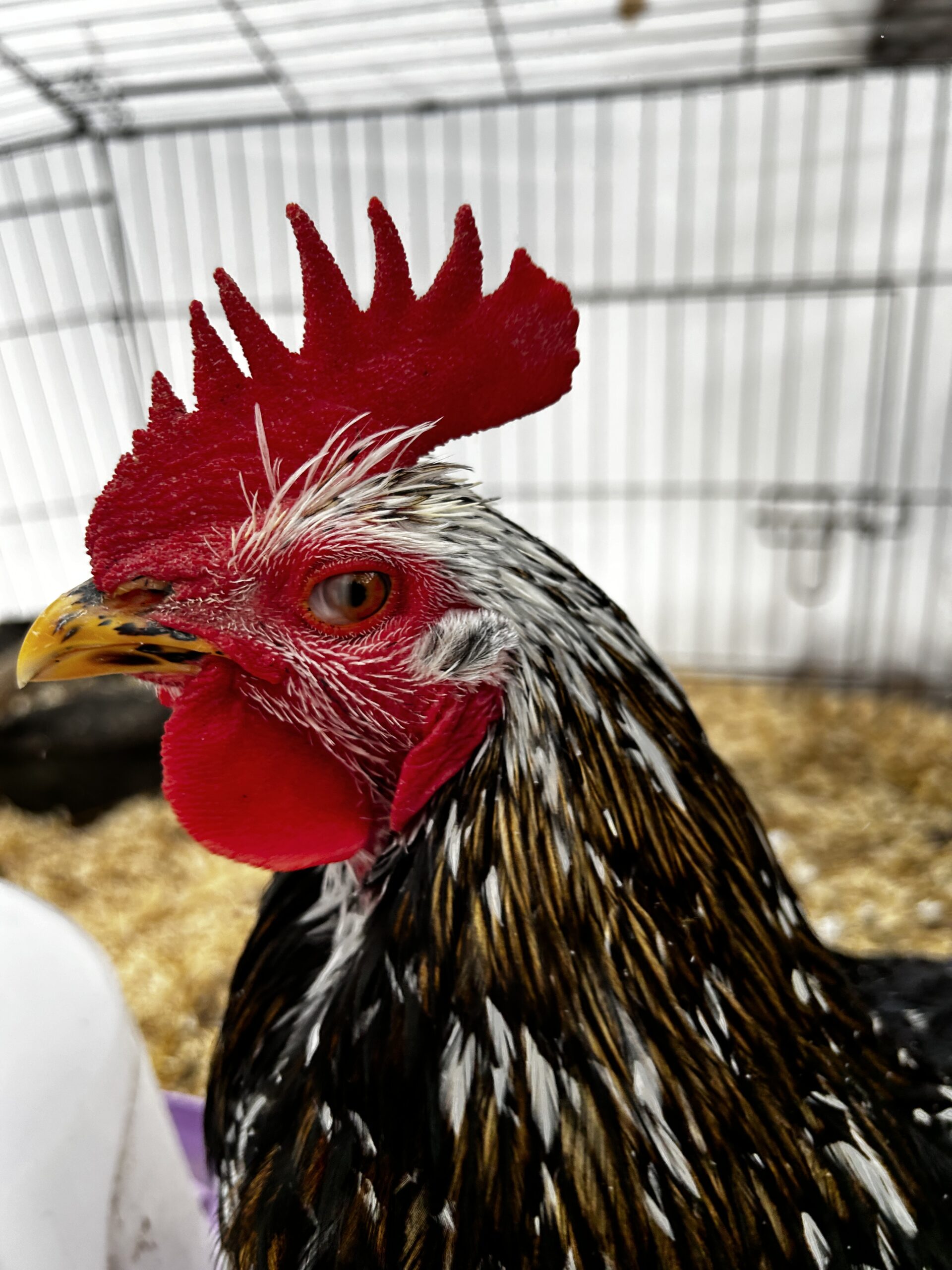
As the guardians of our feathered flocks, witnessing our roosters transition from chirpy chicks to full-fledged guardians of the coop is both fascinating and, at times, challenging. This crucial phase, known as rooster puberty, marks a significant turning point not only in their physical development but also in their behavior within the flock. Here's what to expect, how their behavior changes, and strategies to manage these changes effectively.
When to Expect Puberty
Rooster puberty typically begins between 4 to 6 months of age, but this can vary. Breeds like Bantams may mature faster, while larger breeds like Orpingtons might take a bit longer to show signs of maturity.
Behavioral Changes and Their Impacts
- Protectiveness: The surge in testosterone can make roosters more assertive or even aggressive as they establish their dominance. This behavior is natural but requires careful management to ensure safety and harmony within the coop.
- Crowing: Prepare for your mornings (and, honestly, most of the day) to be filled with the robust crowing of your maturing rooster. This behavior is a sign of their maturity and their way of communicating with the flock and asserting their territory.
- Mating Behaviors: As roosters reach sexual maturity, they'll begin showing interest in hens through mating dances and displays. While this is a natural part of the flock's lifecycle, it's essential to monitor these interactions to ensure the hens are not stressed or harmed.
- Challenges to the Pecking Order: Young roosters may challenge each other or even the older rooster to establish their place within the flock's hierarchy. This can lead to skirmishes but is generally sorted out naturally among the birds.
Management Strategies
- Space is Key: Ensure your coop and run are spacious enough to give your birds plenty of room to spread out. This can help reduce tension and conflicts.
- Divide and Conquer: In cases of excessive aggression, consider separating the young rooster temporarily or creating separate areas within your coop for different flock members.
- Environmental Enrichment: Providing perches, hiding spots, and foraging opportunities can help keep your rooster mentally stimulated and less focused on asserting dominance.
- Handling and Training: Regular, gentle handling can help reduce aggression towards humans. Establishing a routine and using treats can also reinforce positive behavior.
- Observation: Keep a close eye on flock dynamics, especially how the rooster interacts with hens and other flock members. Intervention may be necessary to prevent injury.
More About Rooster Hormones:
A rooster's hormonal levels, particularly testosterone, vary not just seasonally but also daily, peaking during the morning and evening. This timing correlates with when they're most likely to exhibit reactive behaviors. Springtime, a critical season for breeding, also witnesses a surge in testosterone, further intensifying their behavior.
Puberty marks a notably challenging phase, typically spanning from 3-4 months to about a year old, during which young cockerels transition from their juvenile, playful phase into their intended role as flock protectors. It's during this period that many keepers notice a stark change, mistakenly attributing their rooster's newfound assertiveness to aggression. However, this behavior stems from a natural, albeit sometimes misguided, instinct to guard and protect. For instance, it's not unusual for a young rooster, still learning to discern actual threats, to mistakenly identify harmless objects or creatures, such as a butterfly, as potential predators. This confusion can lead to actions that, while often humorous, can also challenge, or even harm, their human caretakers.
Understanding rooster hormones is crucial for anyone involved in chicken keeping, as these biochemical substances significantly influence the behavior and welfare of roosters. Testosterone, the primary male sex hormone, plays a pivotal role in shaping the physical and behavioral traits typical of roosters. Here's a deeper dive into the world of rooster hormones and their impact:
The Role of Testosterone
- Physical Development: Testosterone is responsible for the development of typical rooster characteristics, such as larger combs and wattles, more vibrant plumage, and the development of spurs. These traits not only distinguish roosters from hens but also contribute to their attractiveness as potential mates.
- Behavioral Influence: Beyond physical attributes, testosterone drives behaviors essential for survival and reproduction. This includes aggression, which can be directed towards threats, including predators or competing roosters, and sexual behavior necessary for flock propagation.
Hormonal Fluctuations
- Daily Variations: Testosterone levels in roosters fluctuate throughout the day, with peaks typically occurring in the early morning and late evening. These fluctuations align with periods of heightened activity, such as crowing and territorial patrol, and can influence the intensity of their responses to stimuli.
- Seasonal Changes: The breeding season, primarily spring and early summer, triggers a significant increase in testosterone. This hormonal surge supports the rooster's reproductive activities, including mating behaviors, and enhances their protective instincts towards the flock.
Puberty and Hormonal Surge
- The transition from chick to adult rooster is marked by a surge in hormones, notably testosterone, which can dramatically alter behavior. During puberty, usually occurring between 3 to 6 months of age, young roosters develop their sexual and social behaviors. They begin to establish their position within the flock's hierarchy, often challenging older roosters and displaying increased aggression and territorial behaviors.
- Learning Curve: Puberty is also a learning phase for young roosters as they navigate their roles within the flock. Misjudged threats and overreactions are common as they refine their protective instincts. This period requires patience and understanding from keepers to guide roosters through their developmental challenges.
Managing Hormonal Behaviors
- Environment: Providing a structured and enriched environment can help mitigate some of the negative behaviors associated with hormonal surges. Adequate space, perches, and hiding spots can reduce stress and aggression.
- Diet: A balanced diet that meets nutritional needs without excess protein can help manage aggressive behaviors. Too much protein can exacerbate aggression, especially during peak hormonal periods.
- Social Structure: Understanding and managing the flock's social dynamics can prevent excessive aggression. Introducing new birds carefully and ensuring there are enough hens to prevent over-competition among roosters are strategies that can help maintain harmony.
In conclusion, hormones play a crucial role in the life of a rooster, influencing everything from physical development to complex behaviors. By understanding these hormonal influences, keepers can better support their roosters through various life stages, ensuring both their well-being and that of the entire flock.
Additional Rooster Resources For Peaceful Coexistence With Your Rooster
Companion Planting Guide

Companion planting is an age-old gardening practice that involves pairing plants for mutual benefit. It's an organic way to enhance your garden's health and productivity.
Here is a guide to get you started.
Comprehensive Companion Planting Guide
1. Tomatoes
- Companions: Basil, marigolds, carrots, lettuce, onions, parsley, and garlic.
- Avoid: Cabbage, fennel, and potatoes.
2. Peppers
- Companions: Basil, onions, spinach, and carrots.
- Avoid: Beans and kohlrabi.
3. Carrots
- Companions: Tomatoes, onions, leeks, rosemary, and chives.
- Avoid: Dill and parsnips.
4. Cucumbers
- Companions: Beans, celery, lettuce, dill, peas, and radishes.
- Avoid: Potatoes and aromatic herbs.
5. Lettuce
- Companions: Carrots, radishes, strawberries, cucumbers, and onions.
- Avoid: Cabbage and parsley.
6. Beans
- Companions: Corn, cucumbers, strawberries, celery, and most vegetables and herbs.
- Avoid: Onions, garlic, and peppers.
7. Cabbage and Other Brassicas (Broccoli, Cauliflower, Kale)
- Companions: Dill, celery, onions, potatoes, beets, and chamomile.
- Avoid: Strawberries, tomatoes, and pole beans.
8. Corn
- Companions: Beans, squash, peas, and cucumbers.
- Avoid: Tomatoes.
9. Onions and Garlic
- Companions: Tomatoes, peppers, cabbage, and carrots.
- Avoid: Beans and peas.
10. Zucchini and Squash
- Companions: Corn, beans, radishes, and marigolds.
- Avoid: Potatoes.
11. Strawberries
- Companions: Beans, borage, lettuce, and spinach.
- Avoid: Cabbage.
12. Potatoes
- Companions: Beans, corn, cabbage, and marigolds.
- Avoid: Tomatoes, cucumbers, and raspberries.
13. Eggplants
- Companions: Beans, peppers, tomatoes, and marigolds.
- Avoid: Potatoes.
14. Radishes
- Companions: Carrots, cucumbers, and lettuce.
- Avoid: Hyssop.
15. Peas
- Companions: Carrots, cucumbers, radishes, turnips, and beans.
- Avoid: Onions, garlic, and leeks.
16. Beets
- Companions: Onions, cabbage, and lettuce.
- Avoid: Pole beans.
17. Spinach
- Companions: Strawberries and eggplants.
- Avoid: Potatoes.
18. Herbs
- Many herbs like basil, dill, and parsley are beneficial companions to a wide range of vegetables due to their ability to repel pests and attract beneficial insects.
This list provides a comprehensive overview of various companion planting options for a range of common garden plants. It's a great resource for gardeners looking to maximize the health and productivity of their gardens through natural, symbiotic plant relationships.
Dreaming Of Roosters: What Does It Mean

Dreams about roosters can have various interpretations depending on the context of the dream and the cultural or personal associations one has with roosters. Generally, here are some common meanings attributed to roosters appearing in dreams:
Understanding the Risks of Using Vaseline on Chicken Combs for Frostbite
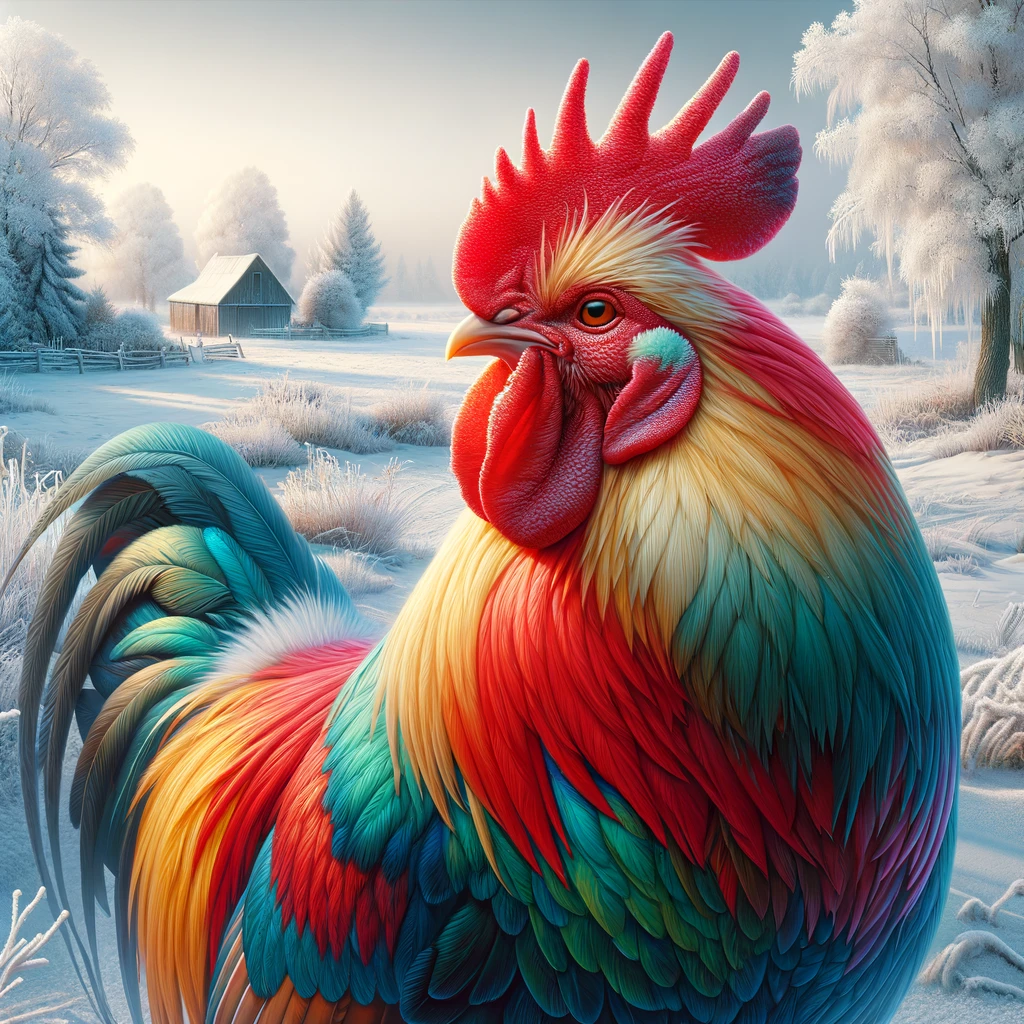
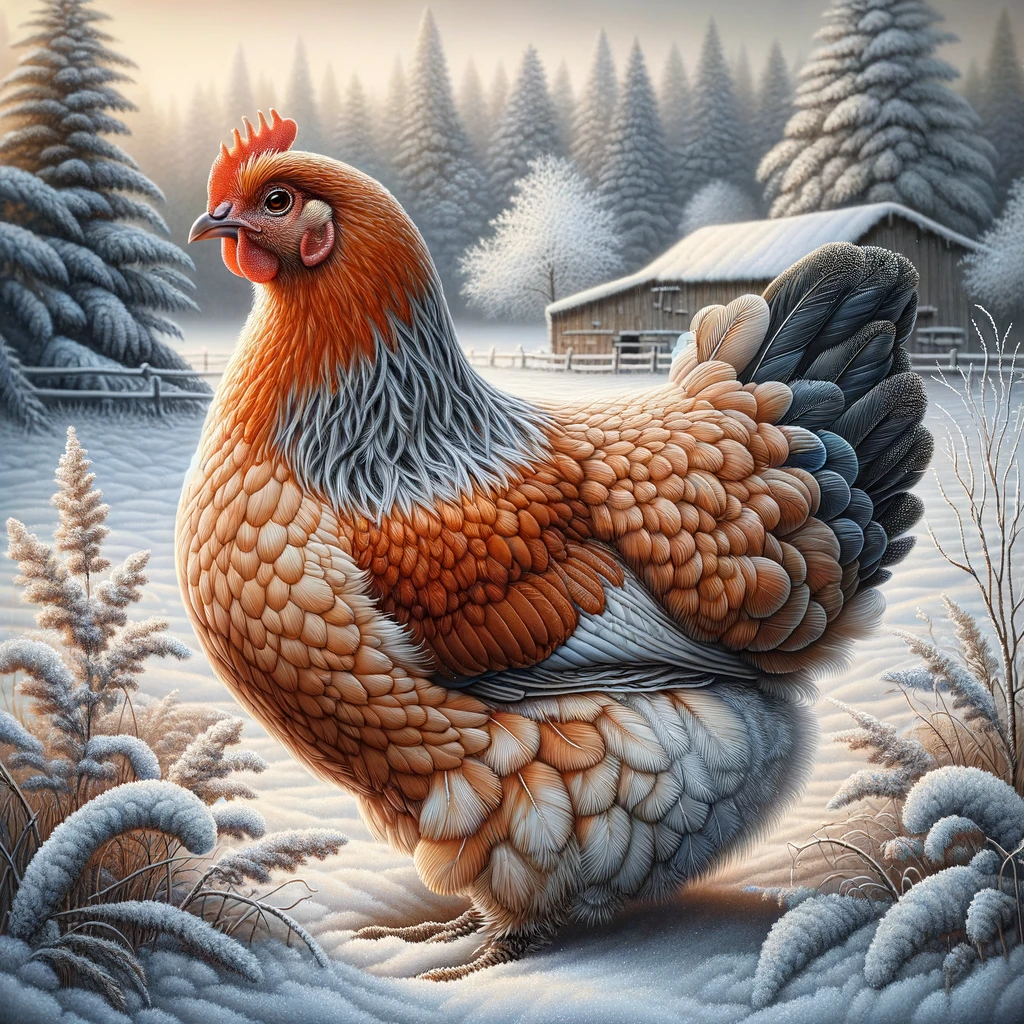
Additional Resources:
The use of Vaseline (petroleum jelly) on chicken combs for frostbite protection has been a topic of debate among chicken owners. Let's explore the insights from various sources on this matter:
Can Petroleum Jelly Protect Chicken Combs from Frostbite?
Frostbite In Chickens: Causes, Prevention, Treatment: from Chicken Fans: They note that using Vaseline on chicken combs and wattles has never been proven effective, and it can do more harm than good in severe colds. The substance can make feathers around the head sticky and attract moisture to the comb, which is counterproductive for frostbite prevention. They stress that coop management is the only reliable prevention method for frostbite
Frostbite:from Poultry DVM
Thanks to my friends Sara & Jacob Franklin at Roovolution for providing these links:
In summary, while Vaseline has been used by some chicken owners for frostbite prevention and healing, its effectiveness is not universally agreed upon, and there are potential risks involved. It's important to consider alternative methods and products specifically designed for chickens, and always prioritize proper coop management to prevent frostbite. If you're unsure, consulting with a veterinarian or a poultry specialist is always a good practice.
